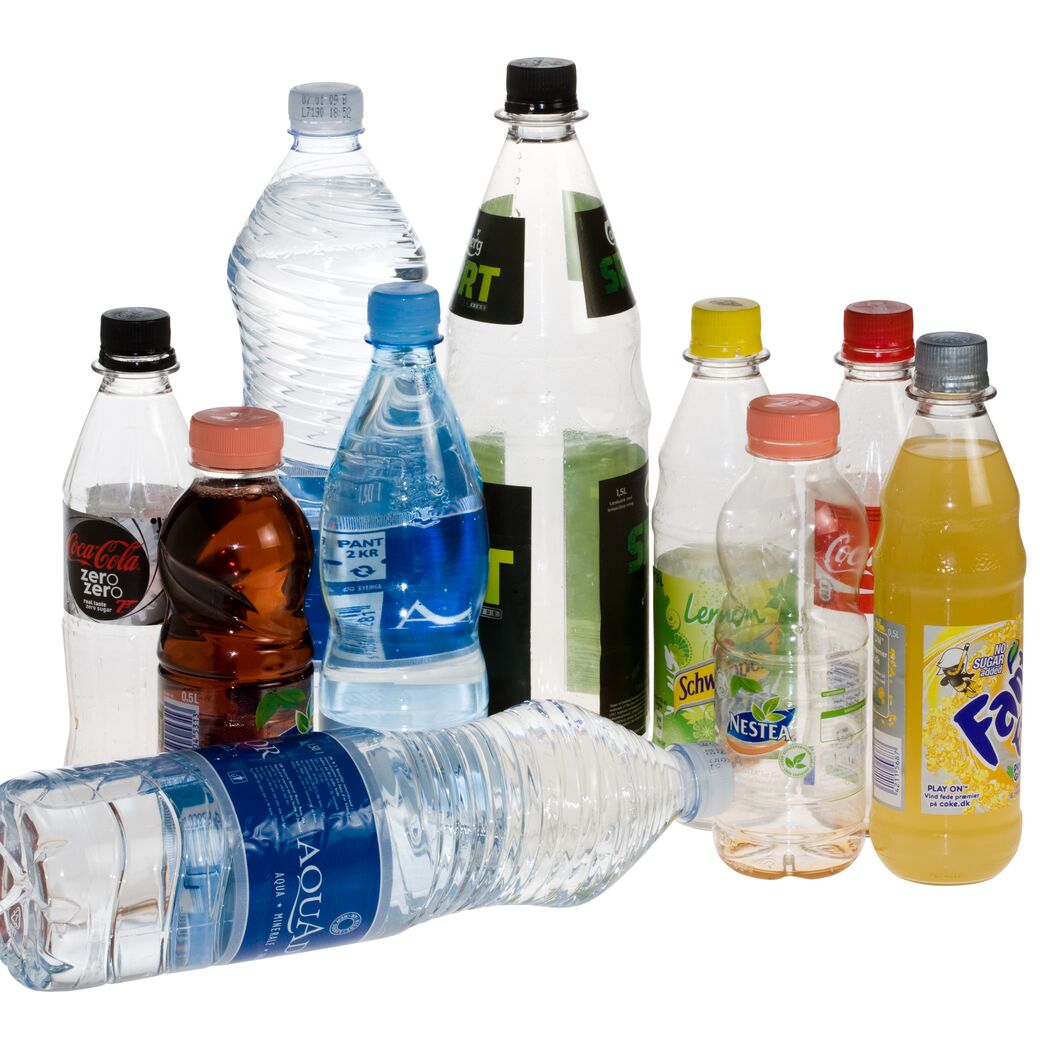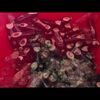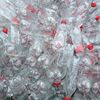PET is one of the most popular and used plastic packaging materials in the world. It is also one of the most dominant waste types in the ocean. However, used PET bottles should not be seen as waste, as they are 100% recyclable. The PET can be heated and molded into numerous shapes. It is a clean, safe, and convenient packaging method. Unlike glass and aluminum alternatives, PET has a low melting temperature. This makes it easy and sustainable to turn PET packaging into a circular economy, also called a closed loop.
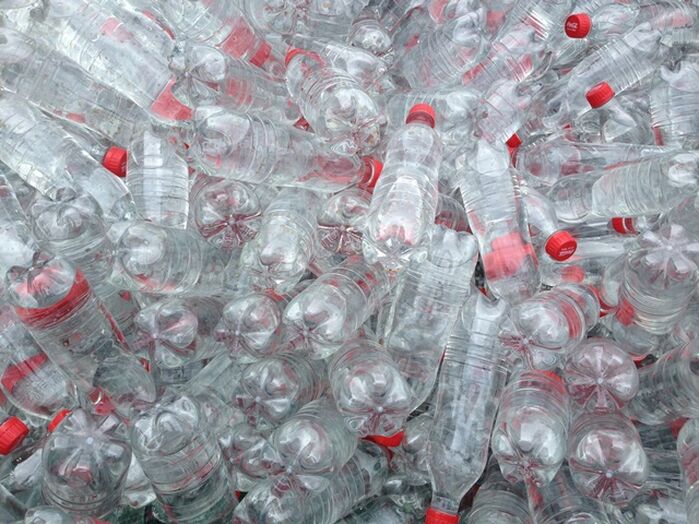
Support Circular Economy by Recycling PET Plastic Bottles
The circular economy is the idea to make products last as long and maintain high value so that they can stay in the economic loop for a long time.
The circular economy has a lot of benefits. By recycling PET bottles, we reduce the amount of waste in landfills, we save on the use of non-renewable resources, less water is used in the recycling process than in the production of virgin pellets, and fewer chemicals are needed to improve the properties of recycled plastic products.
When the plastic is no longer recyclable, it will still hold the same calorific value as it did as a virgin material and can then be used as fuel.
More and more consumers identify as environmentally aware, increasing the demand for recycled products. At the same time, the global population is growing, consequently leading to a greater demand for resources. By reusing the resources already extracted, we are less dependent on Earth's limited raw materials.
Step 1: Collecting the PET plastic bottles
PET bottles can be discarded alongside other waste after use. However, that is not a sustainable solution. Most countries have a recycling plan to ensure that recyclable products, such as PET bottles, are not in the waste bin. Instead of throwing the PET bottles away, consumers are urged to put them in the recycling bin. From there, the recyclable products will be collected and transported to a sorting center.
Also, companies that produce PET waste should make sure they collect the waste and ensure its recycling.
Step 2: Separating the PET bottles
PET plastic bottles get sorted roughly at sorting centers. Both the full and empty PET bottles need to be dewatered and compacted. This would be the perfect place for a RUNI Screw Compactor to separate the dry packaging material from the liquid.
For companies with a certain amount of waste from faulty batches in the production process, it is possible to make the recycling process much easier by dewatering and compacting the bottles. The transportation of PET to further recycling will also be much cheaper and more sustainable if the bottles are already dewatered and compacted. This is possible with a RUNI screw compactor. Either the SK240 or the SK370.
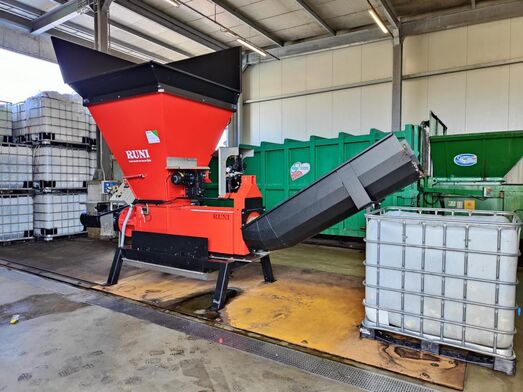
Step 3: Compacting the PET bottles
In a continuous process, the RUNI screw compactor both drains and compacts the PET bottles. The process is straightforward. The operator feeds the machine, either manually, via a conveyor, or with a forklift. The material then falls into the screw, which compacts the PET while squeezing out the liquid. Usually, the drained and compacted PET bottles fall into a container.
Drained and compacted PET bottles are more accessible and more sustainable to transport to a recycling plant.
Step 4: Recycling of the PET bottles
PET bottles can be recycled in 2 different ways: Via chemical and mechanical recycling. Mechanical recycling is the most widely used, as this does not pose a risk of releasing toxic substances from chemical agents that can potentially harm the environment.
When recycling PET mechanically, the goal is to obtain clean PET flakes that can be used directly or mixed with virgin polymer to produce new products.
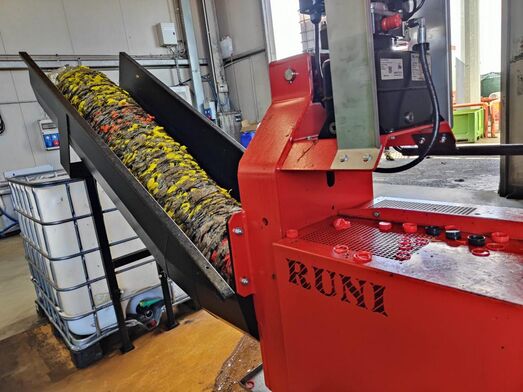
Step 5: Transforming recycled PET plastic bottles into pellets
When the compacted PET bottles arrive at a recycling plant, they are sorted and washed to remove any metals, residues, labels, and glue. Afterward, they will be sent to grinding.
After washing, the PET bottles go into a grinder. The grinder makes the bottles into small PET flakes to make them fit for recycling. When the PET bottles have been ground into flakes, they are transported into a machine that sorts the flakes by material and color. This ensures that no non-PET materials go further in the recycling system.
Step 6: Washing and decontamination
After washing and grinding, the PET plastic flakes are dried and melted into long lines of PET plastic and then cut into small pellets. The pellets undergo decontamination by using nitrogen to make it food approved. Because of the decontamination step, it is possible to use PET for packaging for food and beverages once again. It could also be used for other types of bottle packaging, like cleaning supplies. This process is critical because it makes it safe to use the PET in the bottle-to-bottle loop. This needs to run very efficiently to make sure it is safe for food and beverages again.
Step 7: Reforming and reusing the PET bottles
The recycled PET pellets are then transported to manufacturers for use in the packaging industry. It is now ready to be made into new bottles. The pellets are now heated and formed into the desired size and shape. They are now ready to be reused. This is the end of the bottle-to-bottle loop.
The bottle-to-bottle loop is the ideal way of recycling PET bottles, but it is not always achievable. Sometimes, the plastic collected for recycling is not of high enough quality to be used this way again. In these instances, the recycled PET is ground into flakes and washed before undergoing heat treatment. When heated, it is stretched into fiber used in recycled polyester. This can be used for seat belts, bags, carpets, shoes, clothing, etc.
GET STARTED!
How do you get started with the PET bottle recycling process? To make it easy, environmentally safe, and financially sustainable, your company must be able to dewater and compact PET bottles. The RUNI Screw Compactor can do this. When the PET bottles go through the screw compactor, the volume reduces by a ratio of 8:1. This makes it easier and cheaper to transport, as you will need fewer trucks to transport the compacted PET bottles. When the bottles are compacted, it is also possible to sell them for recycling.
Our solutions for PET bottle compacting and dewatering:
SK240 screw compactor with an hourly capacity of 5000 units of 0,5 liter bottles. Maximum bottle size: 1 liter.
SK370 screw compactor with an hourly capacity of 20.000 units of 0,5 liter bottles or 8000 units of 1,5 liter bottles.
Both SK240 and SK370 can also separate and compress aluminum cans and Tetra-Pak. You can read more about aluminum cans here and Tetra-Pak here.
Case Studies
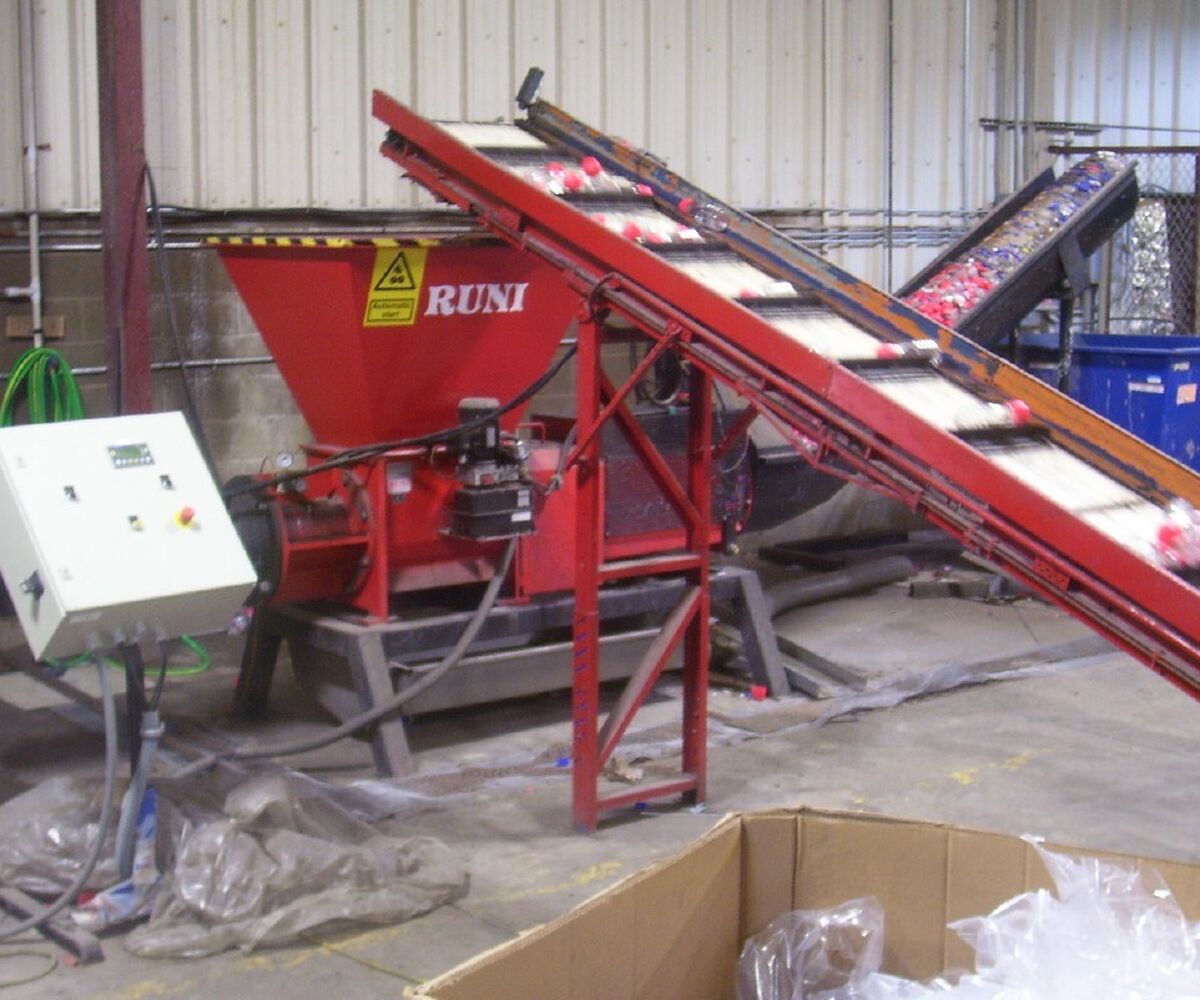
Jasar Recycling has installed a RUNI SK370 to dewater their PET bottles at their East Palestine, Ohio location - with high operational reliability and minimal maintenance.
Read moreContact Us
If you need more information or have questions about RUNI products, please fill out the form below. We will get back to you as soon as possible.
Read more about our privacy and cookie policy.


Contact US Office
+1 (630) 422-3172
runi-us@runirecycling.com
351 Country Club Drive,
Bensenville, IL 60106



